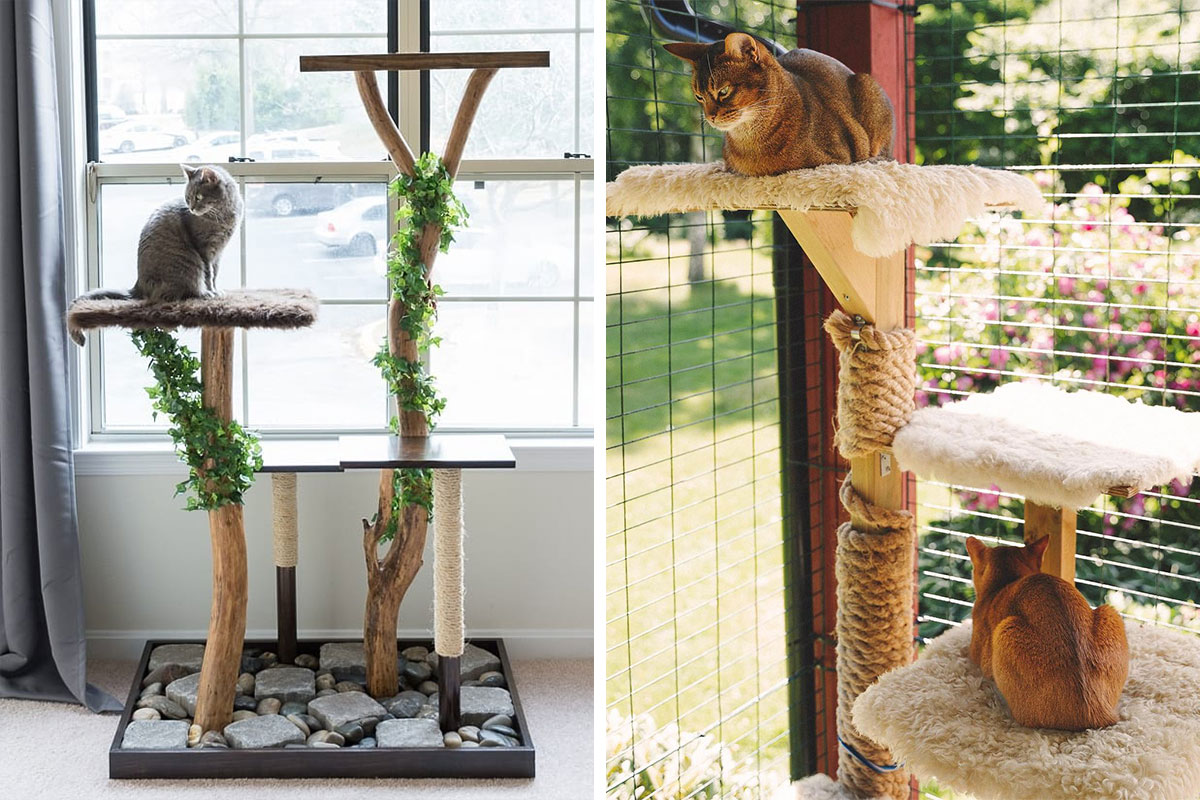
Build an Amazing DIY Cat Tree Tower: 7 Free Plans and Ideas
Embark on a feline-friendly adventure with our guide to building a fantastic DIY cat tree tower! Cats, known for their love of climbing and scratching, find immense joy in having their own vertical haven.
We present seven free plans and ideas that cater to your cat’s natural instincts and provide you with a rewarding and budget-friendly DIY project.
- Use non-toxic adhesives and inspect cat trees regularly.
- Plywood or particleboard recommended for cat tree bases.
- Anchor tall cat trees to walls for extra stability.
The information provided herein is for informational purposes only. Please refer to our disclaimer for more details..
Is it cheaper to build a cat tree?
Building a cat tree can be cheaper, especially if you have the tools and skills needed. It also provides the advantage of customization and control over the quality of materials.
However, weighing the costs, time, and effort involved against the convenience of buying a pre-made cat tree is essential.
What can I use for cat trees?
Suitable materials for constructing a cat tree include untreated plywood or particleboard for the main structure, covered with cat-friendly carpet or faux fur for comfort.
Sisal rope or fabric works well for scratching posts, while PVC pipes or conduits stabilize vertical elements. Incorporating cardboard tubes, plush fabric, and wooden dowels enhances climbing and resting areas.
Secure all materials using non-toxic adhesives, and ensure a stable base to prevent tipping. Regular inspections and necessary repairs will help maintain a safe and enjoyable cat tree for your feline friend.
What can I use for the base of my cat tree?
For the base of your cat tree, opt for a sturdy material like plywood, particleboard, or medium-density fiberboard (MDF) to provide a stable foundation. Cover the base with cat-friendly carpet or rug material for added comfort.
Alternatively, consider using solid wood treated to resist moisture, a non-skid rubber mat to prevent slipping, or heavy-duty cardboard for a lightweight option.
Enhance stability by attaching tiles, bricks, or a concrete paver underneath the base. Regularly inspect and reinforce the base to ensure a secure and safe foundation for your cat’s climbing and play activities.
How do I keep my cat tree from falling over?
To prevent your cat tree from falling over, prioritize a stable foundation by choosing a wide and sturdy base made of materials like plywood or particleboard.
Add weight to the bottom using tiles, bricks, or a concrete paver, and ensure all components are securely attached with quality construction. For taller structures, consider anchoring the top part to the wall for additional support.
Regularly inspect the cat tree, tightening screws and bolts as needed, and promptly address any signs of wear or damage. Proper placement on a level surface, away from high-traffic areas, and distributing weight evenly across the structure further enhance stability, ensuring a secure and safe environment for your cat’s play and exploration.
Here are some ideas for your own DIY cat trees
1. Classic Cat Tree:
The classic cat tree design is a staple for feline enthusiasts. This plan features multiple levels, providing ample space for your cat to climb, scratch, and perch.
Incorporate sturdy scratching posts at various heights and a cozy perch at the top for a bird’s-eye view edge. Detailed step-by-step instructions and diagrams for cat tree plans that you can find online make this traditional cat tree an accessible and satisfying project for both experienced and novice DIYers.
2. Hanging Cat Tree:
Perfect for smaller spaces, the hanging cat tree adds a touch of creativity to your feline’s play area. This design involves suspending various platforms, perches, and scratching posts from the ceiling, creating an engaging vertical space for your cat.
Ensure safe hanging techniques and explore inventive ways to secure the elements, providing your cat with an exciting and space-efficient playground.
3. Multi-Functional Cat Tree:
Take your DIY cat tree to the next level with a multi-functional design that serves as a playground and cozy retreat in one. Incorporate built-in shelves for climbing, hiding spots for napping, and perhaps even a hammock for relaxation.
This versatile cat tree adapts to your cat’s various moods and activities, offering a dynamic and engaging environment.
4. Repurposed Furniture Cat Tree:
Inject a unique flair into your cat’s space by repurposing old piece of furniture into a personalized cat tree. Transform bookshelves, ladders, or dressers into a custom playground with scratching surfaces and cozy nooks to build a diy cat tree.
Encourage creativity in selecting and modifying existing pieces, allowing you to create a one-of-a-kind cat tree that complements your home décor.
5. Natural Cat Tree:
Bring a touch of the outdoors inside with a natural cat tree using real tree branches or logs. This design satisfies your cat’s climbing instincts and adds rustic and visually appealing decor to your home.
Ensure safety by properly preparing and attaching natural materials. Make a cat condo that seamlessly blends with your home’s natural aesthetic. Make a cat tree with real branches that cats love to jump and play around.
6. Wall-Mounted Cat Shelves:
Perfect for small apartments or homes with limited floor space, wall-mounted cat shelves create a vertical playground for your cat. These shelves can be strategically placed to encourage climbing and exploration, providing an engaging environment while saving valuable floor space.
Emphasize this design’s versatility and space-saving benefits, allowing cat owners to cater to their pets in any living situation. Mount or nail wood shelf on the wall, use a little wood glue to glue the basket onto wood and to secure the whole thing, let it dry and put a cushion inside the basket. There you go. Now you have a stylish shelf with a kitty in it!
7. Cat Tree with Built-In Scratching Posts:
Focus on fulfilling your cat’s natural scratching instincts with a cat tower with built-in scratching posts. Choose durable materials like sisal rope around or fabric for the scratching surfaces.
Highlight the importance of selecting enticing materials for cats to claw into while offering longevity. This design is easy to make, provides an outlet for cat scratching, and creates a dynamic and interactive kitty tree.
Conclusion
Embark on a rewarding journey of feline-friendly creativity with these seven DIY cat tree ideas that cater to various preferences and living spaces. Whether you opt for the classic design with multiple levels and a cozy perch or choose the space-saving elegance of hanging cat trees, each plan is a testament to the joy of hands-on craftsmanship, especially for indoor cats.
Elevate your cat’s playtime with multi-functional structures that serve as both playgrounds and retreats or repurpose old furniture into unique, personalized cat havens. Embrace nature indoors with a natural cat tree, bringing the outdoors in with branches and logs.
For those tight on space, consider wall-mounted cat shelves that offer vertical exploration without sacrificing floor area. Finally, prioritize your cat’s scratching instincts with a cat tree that features built-in scratching posts, promoting healthy behavior in a dynamic and interactive space.
With these ideas, you’ll create a haven for your feline companion and unleash your inner DIY enthusiast. Happy crafting from your veterinarian!
2Kviews
Share on Facebook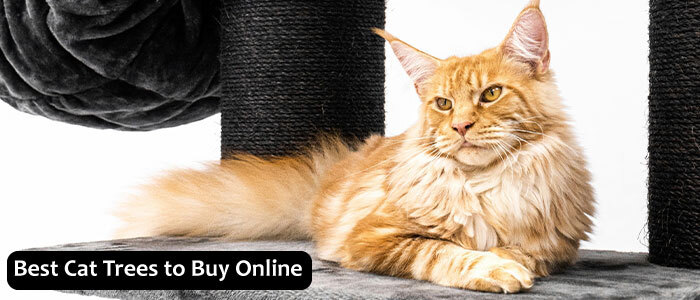
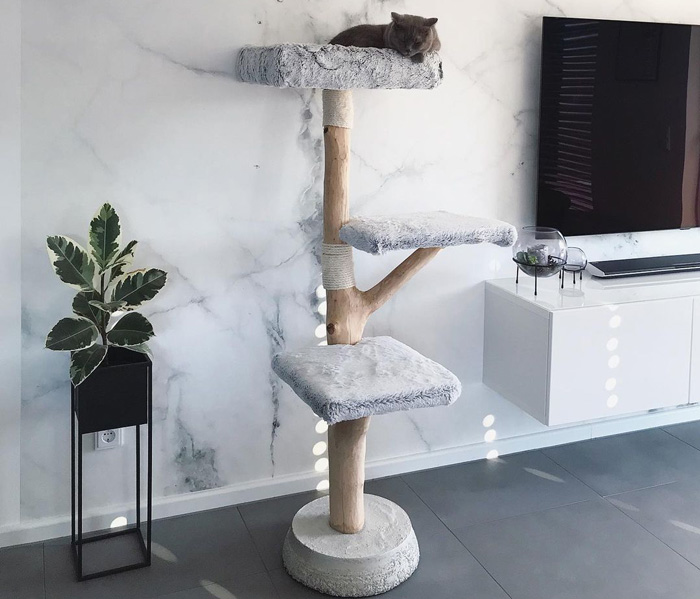 Image credits:
Image credits: 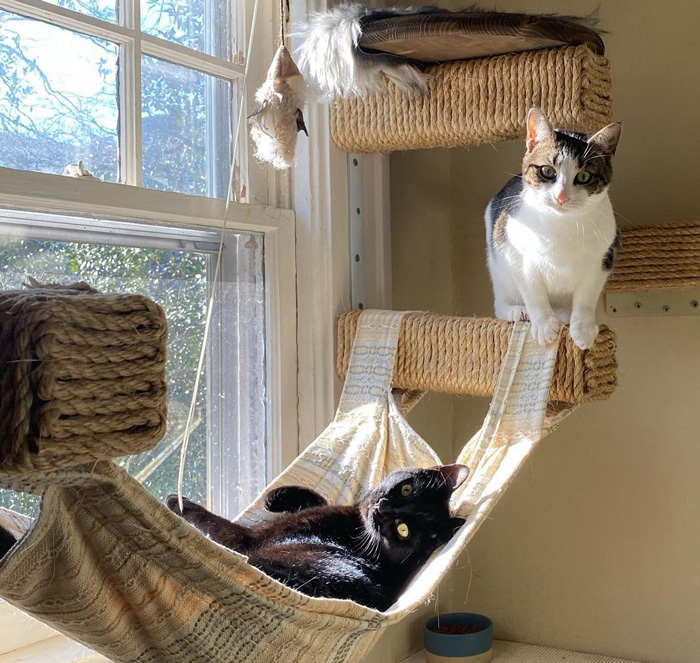 Image credits:
Image credits: 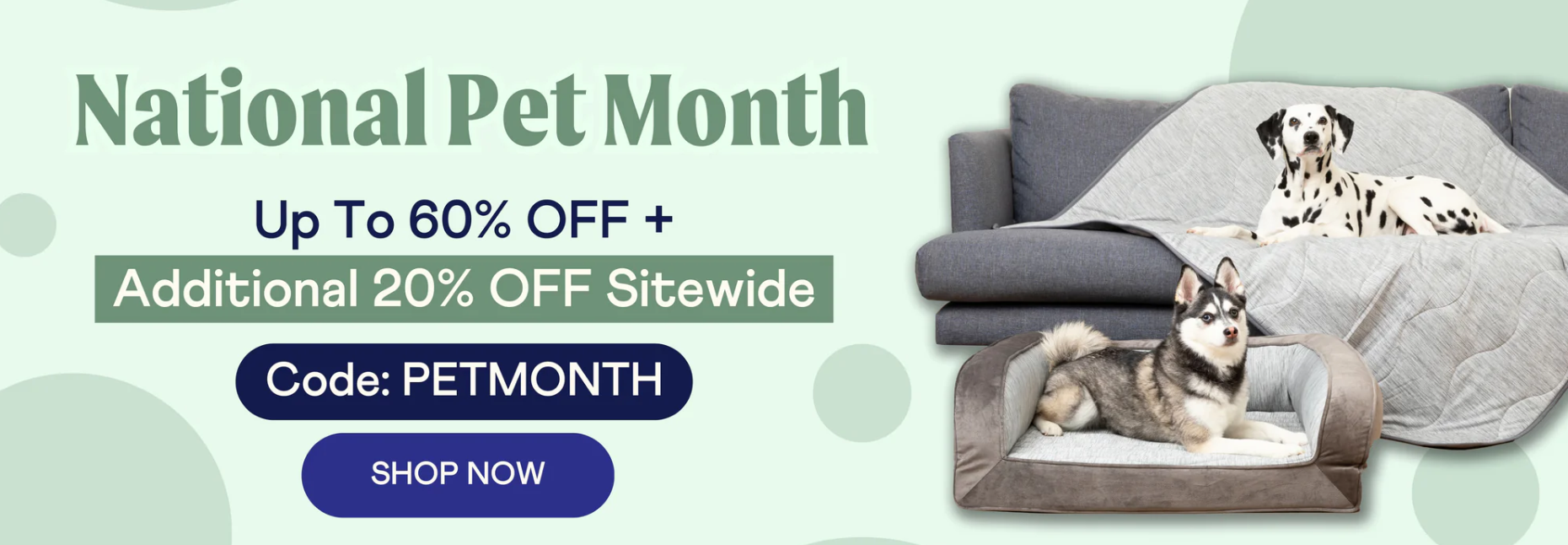
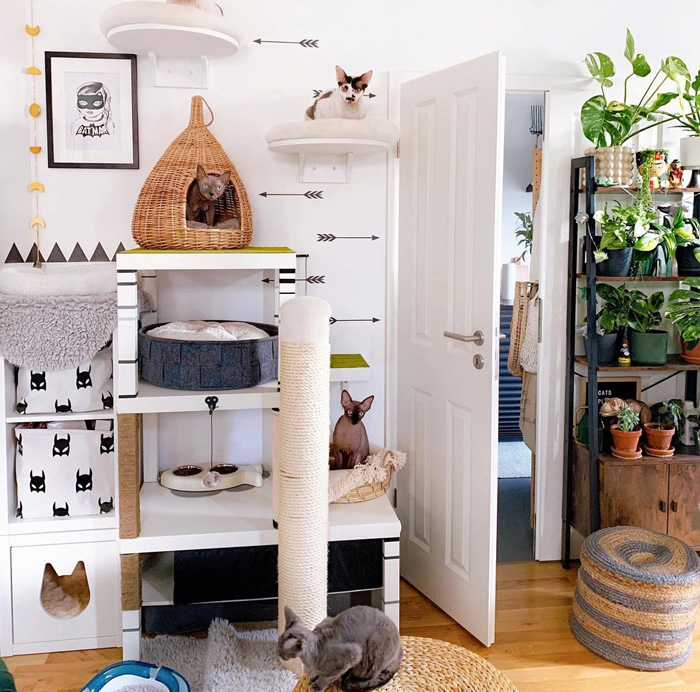 Image credits:
Image credits: 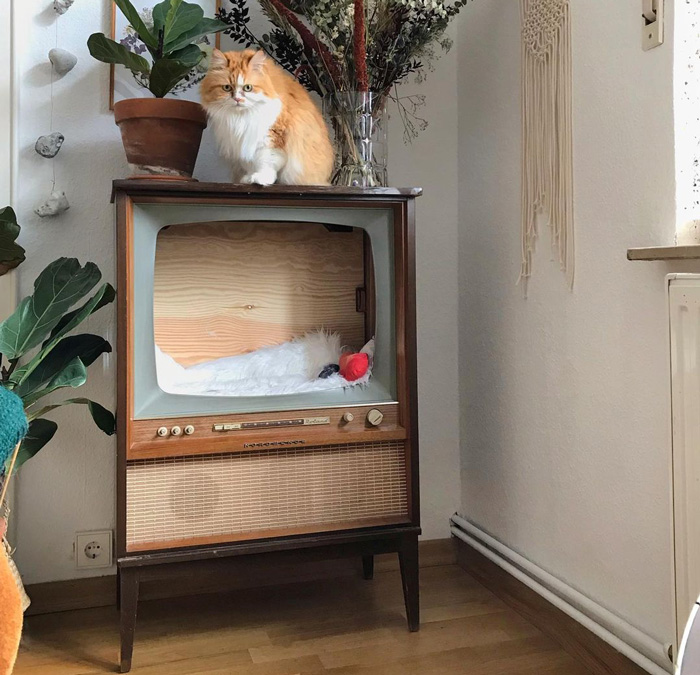 Image credits:
Image credits: 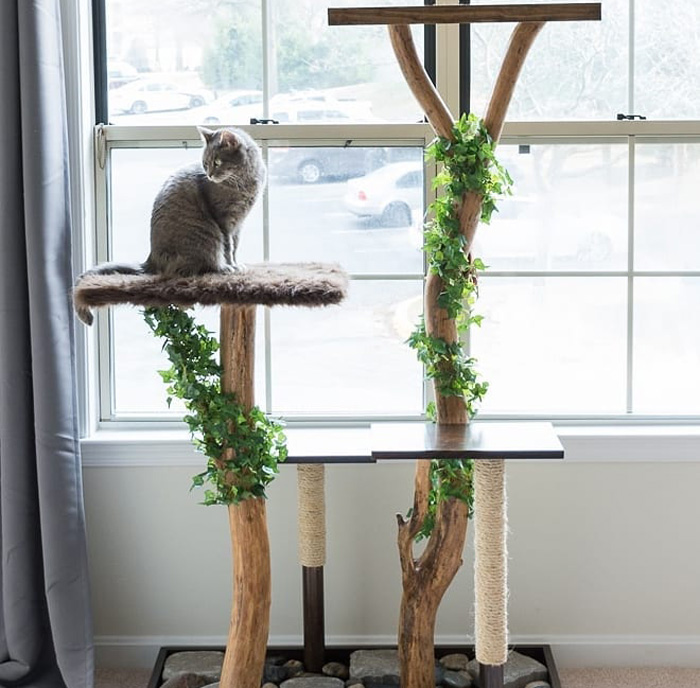 Image credits:
Image credits: 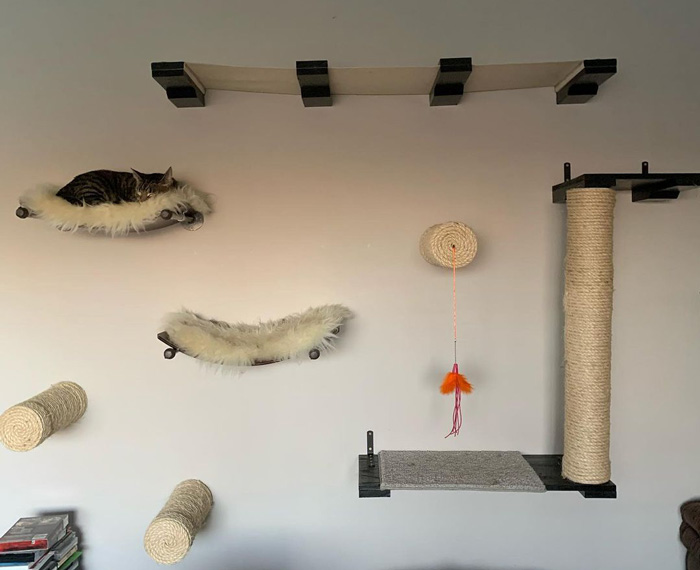 Image credits:
Image credits: 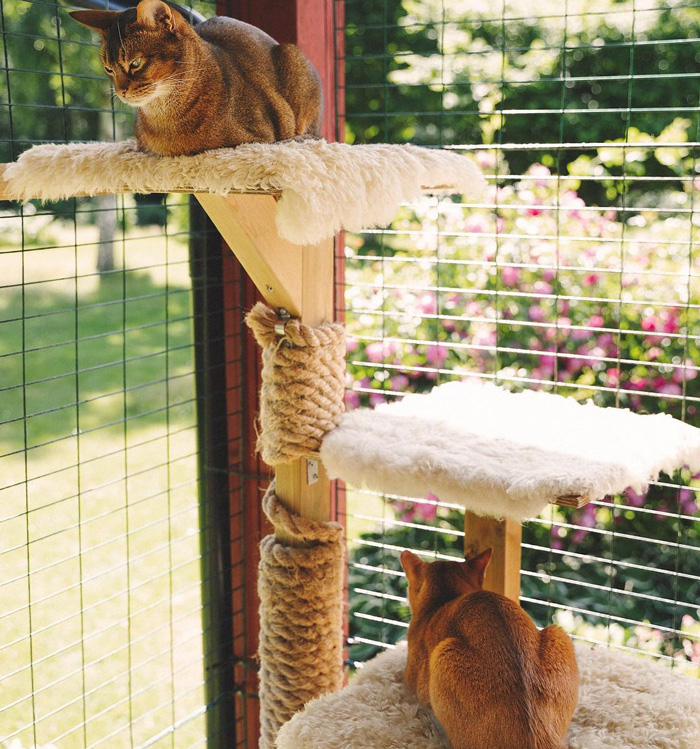 Image credits:
Image credits: 


15
0